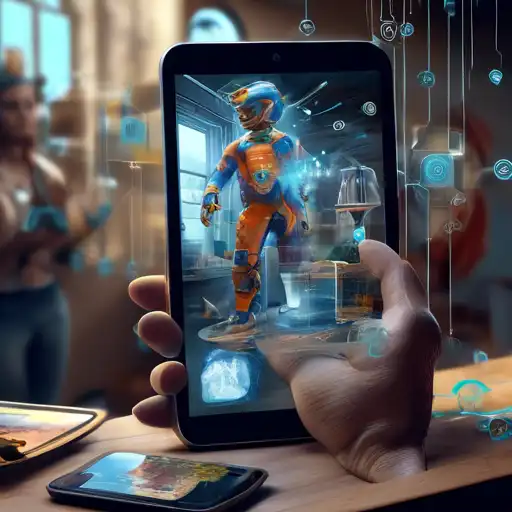Introduction to Augmented Reality
Augmented Reality (AR) is transforming the way we interact with the world around us. By overlaying digital information onto the physical environment, AR creates a blended experience that enhances our perception of reality. This technology is not just a futuristic concept but a present-day tool that's reshaping industries, from retail to education.
How Augmented Reality Works
At its core, AR technology uses sensors and algorithms to detect the user's environment and superimpose digital content in real-time. This can be achieved through various devices, including smartphones, tablets, and specialized AR glasses. The seamless integration of digital and physical worlds opens up endless possibilities for interactive experiences.
Applications of Augmented Reality
AR is making waves across multiple sectors. In retail, it allows customers to visualize products in their own space before making a purchase. In education, it brings learning materials to life, making complex concepts easier to understand. The healthcare industry benefits from AR through advanced surgical simulations and patient care enhancements.
Retail and Shopping
Imagine trying on clothes or previewing furniture in your home without leaving your couch. AR makes this possible, offering a personalized shopping experience that boosts customer satisfaction and sales.
Education and Training
AR transforms traditional learning methods by providing interactive 3D models and simulations. This hands-on approach improves engagement and retention rates among students.
The Future of Augmented Reality
As technology advances, the potential for AR continues to grow. With the development of more sophisticated AR glasses and the integration of AI, the line between digital and physical worlds will blur even further. The future of AR promises more immersive and intuitive interactions, changing the way we live, work, and play.
Challenges and Considerations
Despite its potential, AR faces challenges such as privacy concerns, technological limitations, and the need for widespread adoption. Addressing these issues is crucial for the sustainable growth of AR technology.
Conclusion
Augmented Reality is not just a technological innovation; it's a new way of experiencing the world. By blending digital with physical, AR enhances our daily lives and opens up new opportunities for creativity and efficiency. As we look to the future, the possibilities are limitless.
For more insights into the latest tech trends, check out our Tech Trends section.
